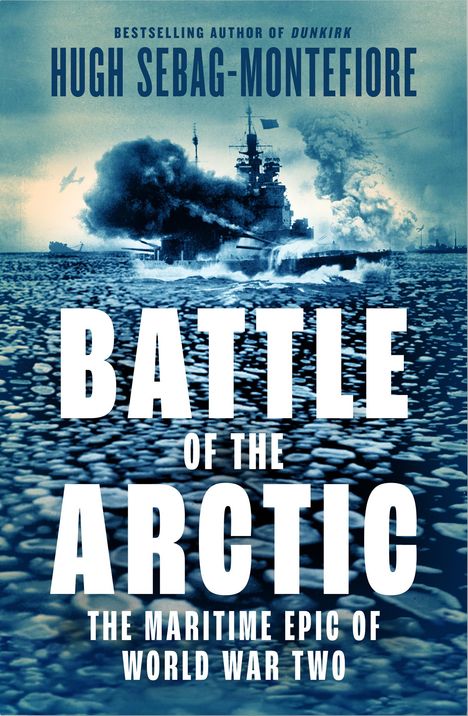Hugh Sebag Montefiore: The Sea War, Gebunden
The Sea War
- The Maritime Epic of World War Two
(if available from our supplier)
- Publisher:
- HarperCollins Publishers, 11/2025
- Binding:
- Gebunden
- Language:
- Englisch
- ISBN-13:
- 9780008335779
- Item number:
- 10827185
- Volume:
- 816 Pages
- Weight:
- 270 g
- Format:
- 240 x 159 mm
- Thickness:
- 45 mm
- Release date:
- 6.11.2025
- Note
-
Caution: Product is not in German language
Blurb
No campaign during World War Two contained more spinetingling drama, outstanding courage and heartbreaking tragedy than the Arctic convoys. Yet they - and the multifaceted Battle of the Arctic that had to be fought to get them through to Russia - remain one of the war's most undercelebrated feats.
As this book's title implies, Battle of the Arctic tells a unique story. For much of the conflict was complicated by terrific storms, snow, ice, fog, whales and Arctic mirages, so that what is chronicled at times sounds like a cross between the nightmarish torment experienced by both Shackleton in his ship Endurance and Scott of the Antarctic, and an Arctic version of Robinson Crusoe.
The action unfolded as Allied naval and merchant seamen, airmen, submariners, soldiers and intelligence officers delivered on their countries' promise to take arms to Russia notwithstanding the German attempts to hunt them in their aircraft, U-boats and surface fleet spearheaded by Tirpitz and Scharnhorst . When ships were attacked, and went down in seas so cold that a man could die after five minutes of immersion, it triggered events reminiscent of the do-or-die moments during the sinking of the Titanic. Men perished one by one in lifeboats, and as castaways on deserted Arctic islands where they were stalked by polar bears. Frostbitten and wounded survivors ended up in primitive Russian hospitals where amputations were carried out without anesthetics. Others, while stranded for months in the communist state they were aiding, experienced the murky worlds of the NKVD, and the gulag, as well as famine and prostitution.
Using new material unearthed in American, British, Russian and German archives, as well as Polish, Norwegian, French and Dutch sources, and a remarkable collection of vivid witness accounts brought together at the passing of the last survivors, Hugh Sebag-Montefiore can at last shine a revealing light on this extraordinary tale that oscillates between the sailors' eye view on the front line, and the controversies that infuriated world leaders.

